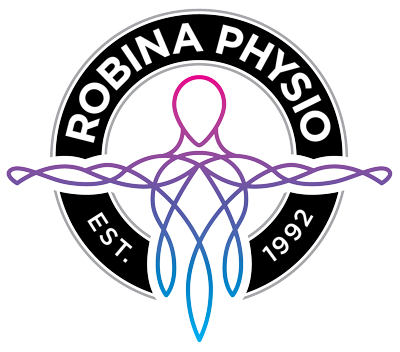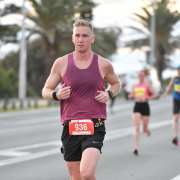Running Physio
Running Physio
By Aaron Woolley. Gold Coast Physio, Robina Physiotherapy.
Running is an excellent activity that offers numerous health benefits. Not only does it help with cardiovascular fitness, it also is great for building soft tissue strength, bone density and has huge benefits for mental health. Running also has great community engagement and therefore has great social interactions whether you’re just starting out or a seasoned competitor. Almost all runners will experience an injury during their running journey. Thankfully, the majority of running injuries are minor and with good quality physiotherapy rehabilitation like you would receive with a Running Physio at Robina Physio on the Gold Coast these injuries can be treated quickly and effectively.
In this article, we will delve into the common causes of running injuries, signs to watch out for, and tips to help you remain injury-free. We will also highlight the pivotal role a Running Physio at Robina Physio on the Gold Coast can have in both managing and preventing future injuries.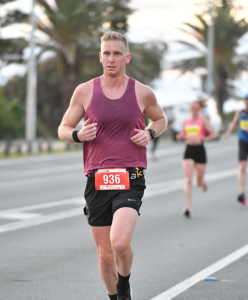
Common Running Injuries
- ITB Syndrome: The ITB, running from the hip to the ankle, aids in knee stabilization. However, its structure makes it prone to injuries, especially when there’s excessive tension on the lateral knee. Symptoms include pain on the knee’s outer side, worsening pain during runs, discomfort when ascending or descending stairs, and post-run soreness.
- Patellofemoral Joint Syndrome: The kneecap endures significant force during runs. An imbalance or excessive force can lead to pain around the kneecap. Symptoms often include a vague, shifting pain that might intensify during a run but occasionally diminishes for some runners.
- Muscle Tightness and Strains: Muscles tightness and pain is highly common in runners. Muscles in the legs, gluts and lower back are the most common sites for muscle pain. But considering that running involves the entire body, running related muscle pain could affect any muscle in the body. Getting an assessment and soft tissue release from an expert running physio at Robina Physio on the Gold Coast can quickly improve this and get you running again. BOOK ONLINE HERE!
- Shin Splints: Shin splints are characterised by pain along the inside border of the tibia. Swelling in the area may or may not be present. It is common for shin splint related pain to feel like Be dull and throbbing pain that occurs during and after running. Shin splints is often worse at the beginning of running, gets better as you warm up, then worse again following running.
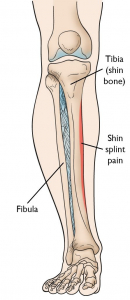
- Plantar Fasciitis: This condition affects the thick band beneath the foot, crucial for arch support. Symptoms typically include pain near the heel, which may extend across the foot, exacerbated pain during runs, and post-run soreness. Poor running and foot biomechanics highly impact the likelihood of experiencing plantar fasciitis.
- Achilles Tendinopathy: Tendons, especially the Achilles, can get injured if they can’t handle the exerted load. Symptoms include pinpointed tenderness, a “warm-up effect” where pain decreases during a run, post-run discomfort, and recurring pain after resuming runs post-rest.
- Stress Fractures: Stress fractures are caused from multiple factors including training overload and poor technique. A stress fracture is a small crack in the bone and presents with persistent pain which is aggravated by running. The most common sites for stress fractures in runners are the tibia and foot. These injuries can often be mis-diagnosed as shin splints so getting an examination from a running physio at Robina Physio on the Gold Coast is highly recommended if you are experiencing shin or foot pain from running.
Factors Increasing Injury Risk:
- Mis-managed training loads: Arguably the most significant risk factor, poor load management refers to how much running you undertake. Many who visit our clinic fall into the ‘overtrained’ category. Overtraining happens when your body hasn’t had the chance to adapt to the volume of running you’re doing, leading to injuries. It’s a delicate balance between building endurance and managing your running load. See my previous load management blog HERE.
- Changes in Footwear and/or Technique: It’s common for runners to experience discomfort after switching to a new pair of shoes. Even if the new pair is of the same model and make, the change can introduce a risk. It’s vital to break in new shoes gradually before committing to long runs. You also need to be careful when adjusting your technique. Small changes can drastically transfer forces to new muscles, tendons and bones. This can easily lead to injury if you don’t also adapt your training loads during this time.
- Inadequate Strength: Strength training plays a vital role in injury prevention. A strong body can handle more stress and protect itself better as your tissues can improve their tolerance to the high impacts involved with running. Some of our joints and tendons experience upwards of 4 times your body weight every stride. Doing a full body strength session that incorporates running specific lower limb exercises (e.g. lunges and step ups) is a must, and don’t forget that core strength.
- Excessive Muscle Tightness: Running tends to load specific muscles more than others (e.g. calf, quadriceps, hamstrings, gluts and TFL). Overtime these muscles can easily become pathologically tight leading to imbalance and pain. Making you incorporate some mobility work into your training program either with some stretching, foam rolling and/or massage. Getting some massage and dry needling from a Gold Coast Running Physio at Robina Physio will help considerably with this.
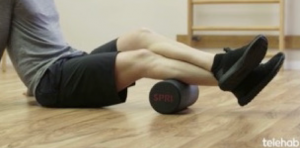
How to Stay Injury Free:
- Structured Training Plans: Planning is very important in load management and decreasing overuse injuries. Gradually increasing your volumes and strategically adding intensity will make your training more effective and minimise your injury risk. Try to aim for an increase in volume of approximately 10-15% per week, any higher and your injury risk skyrockets.
- Add Resistance Training: The age-old debate about whether distance runners should incorporate strength training rages on in some communities. But the evidence is clear that strength training is key to preventing and treating injuries. It has also been shown to improve running performance, so really, it’s a no brainer in my book. Adding strength training 2-3 times per weeks can be a huge boost. Try working your entire body in a session and include some more running specific exercises that use “split type stances” e.g. lunges, step ups and single leg deadlifts.
- Early Intervention: Early detection and timely professional intervention can hasten recovery. Prolonged neglect only exacerbates the injury, making recovery more challenging. Even if it only feels like a small niggle get in and see our Gold Coast Running Physios at Robina Physio straight away for prompt and effective treatment to keep you running harder and longer.
At Robina Physio on the Gold Coast our mission surpasses mere injury diagnosis and treatment. After a comprehensive assessment, we focus on a swift, effective rehabilitation process to get you back on track. Our multifaceted approach includes hands-on treatments, tailored exercise programs, and structured return-to-running plans.
Remember, as Physiotherapists, our goal isn’t just recovery; it’s prevention. We’re deeply invested in injury prevention, frequently conducting running assessments to help avid runners remain injury-free.
If you’re suffering with an injury or need guidance to prevent injuries and set up a training plan, Contact Us on (07)55787233 or BOOK ONLINE with our expert Physiotherapists today! Stay safe, keep running!
